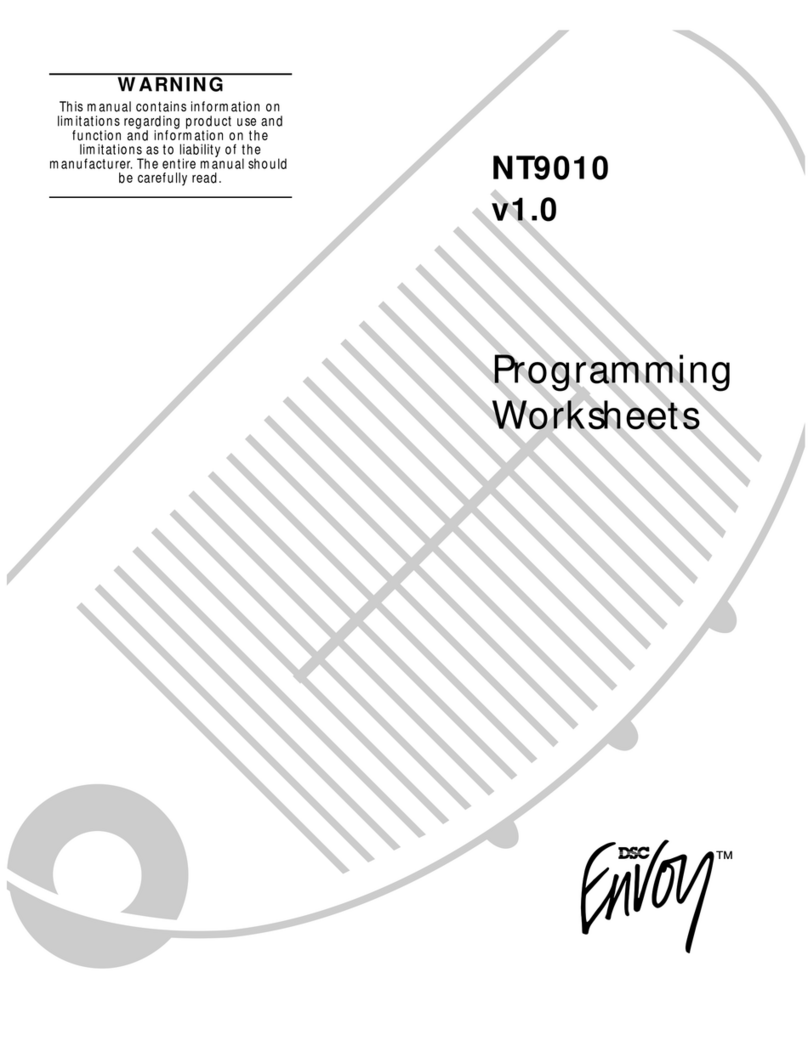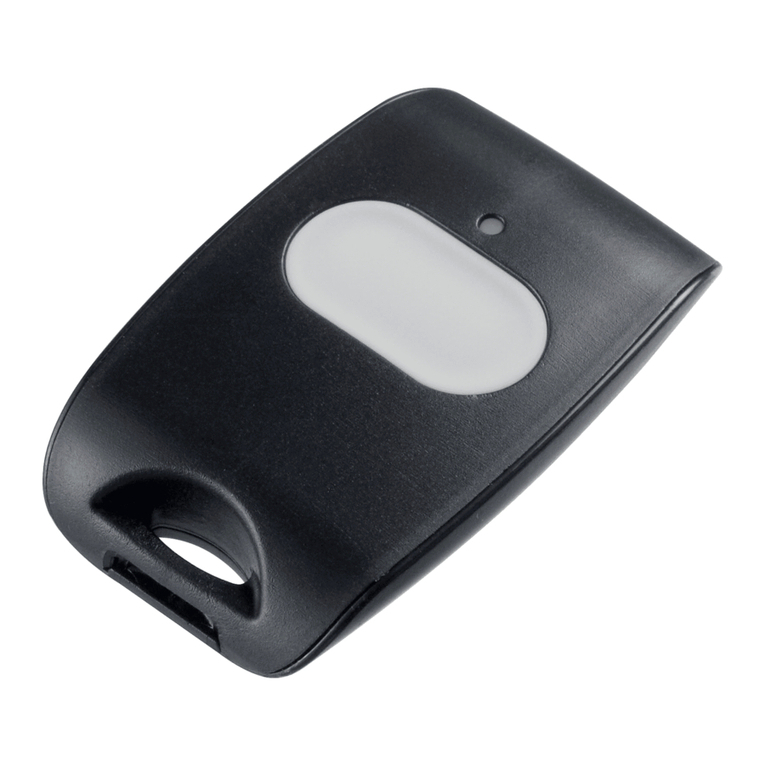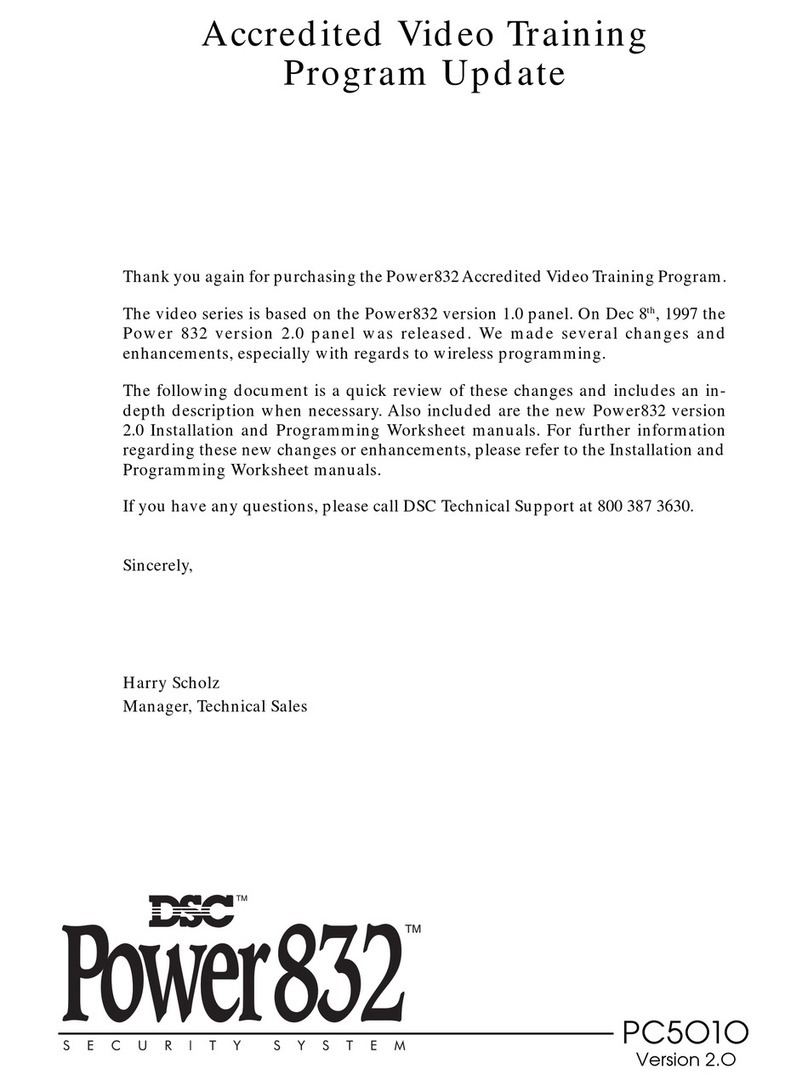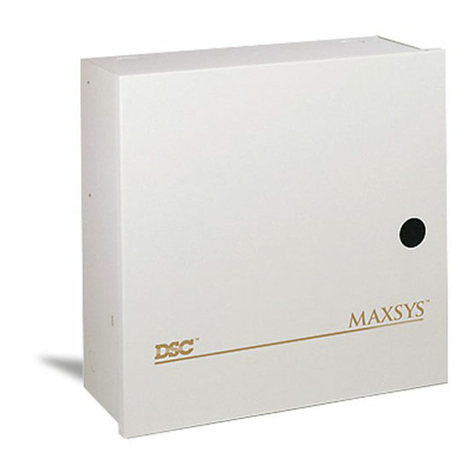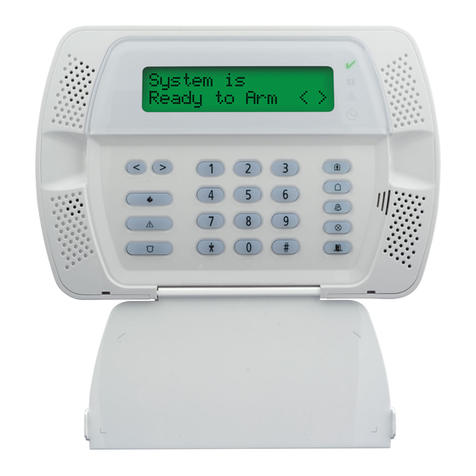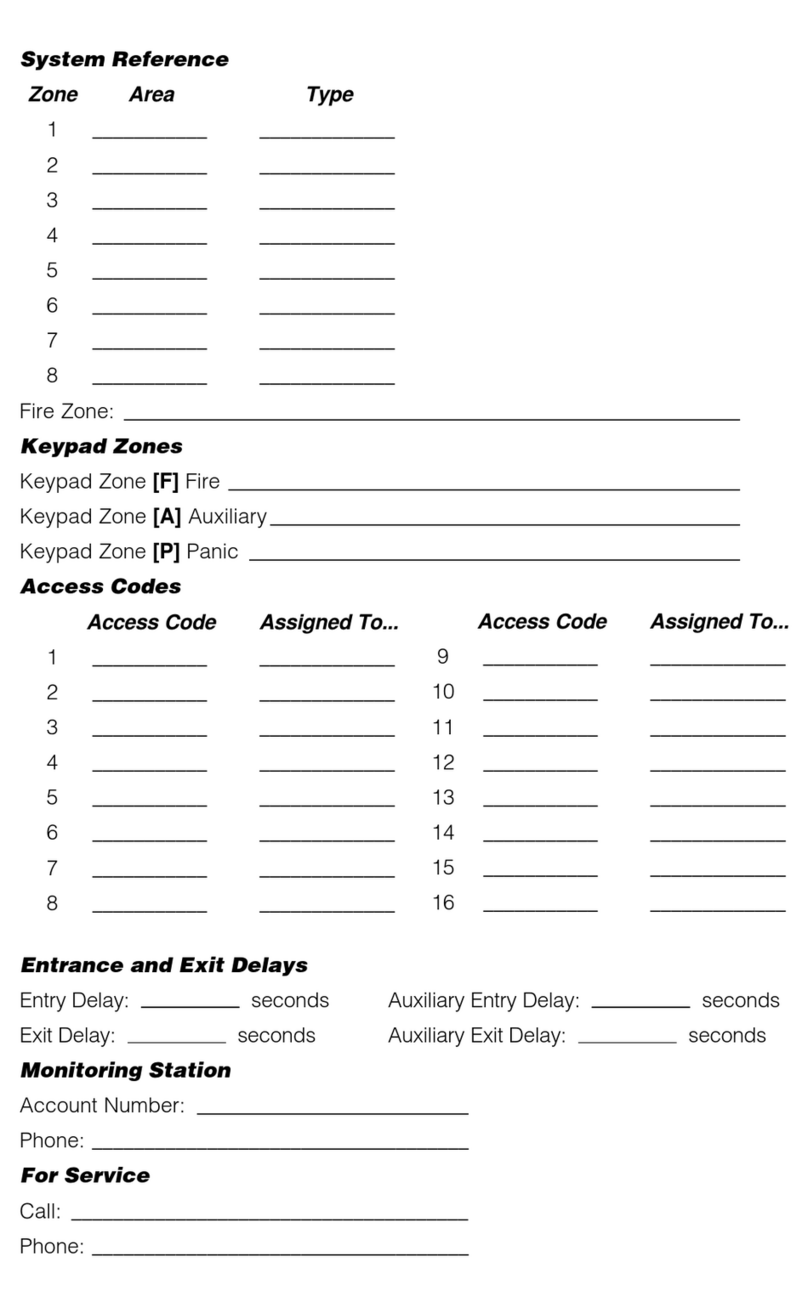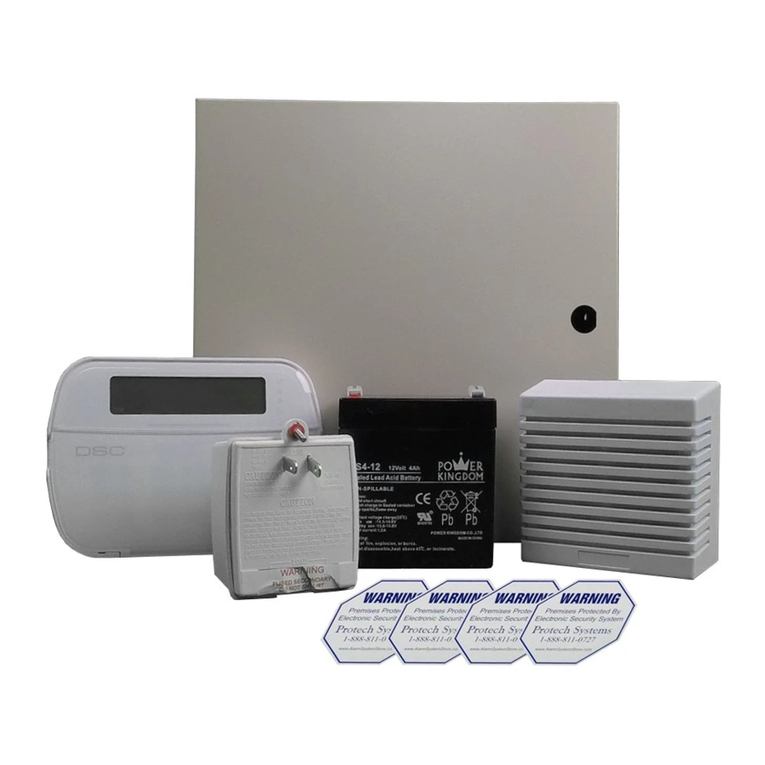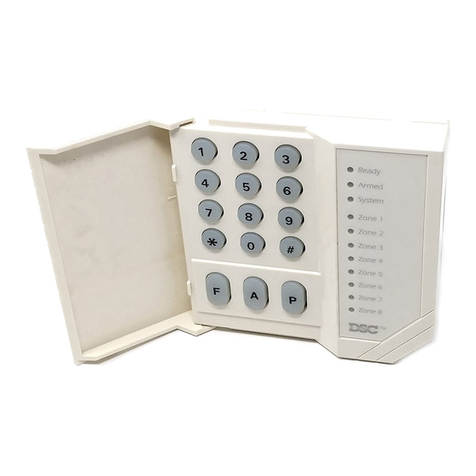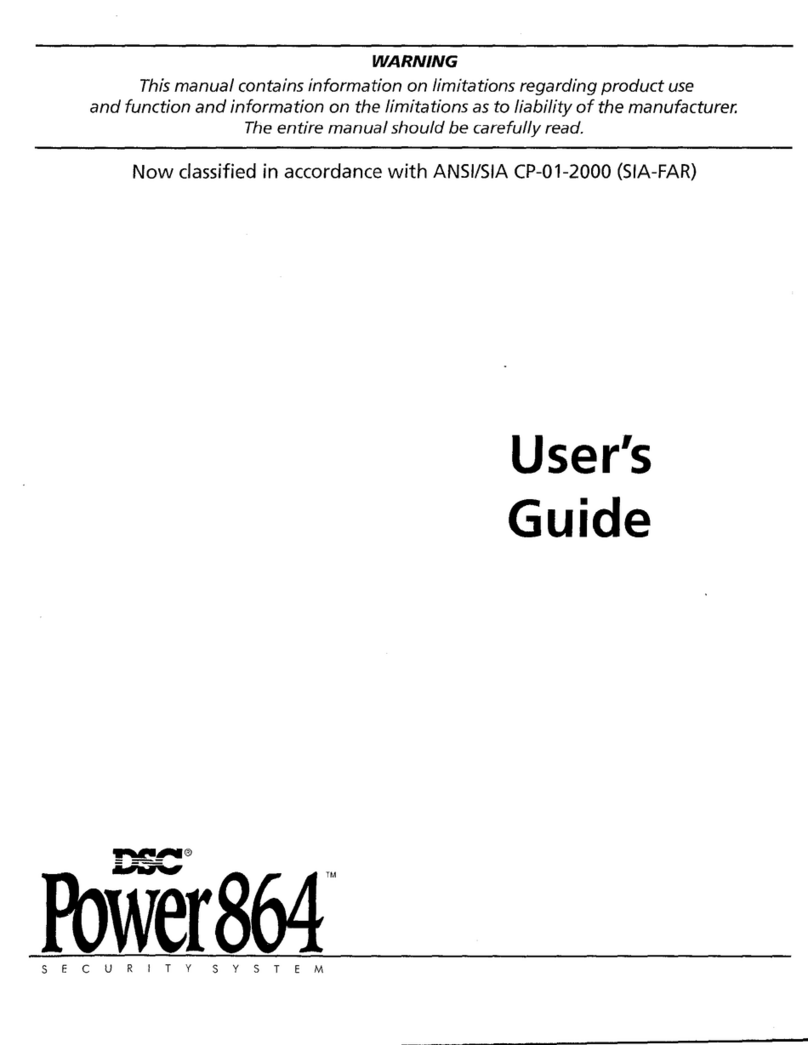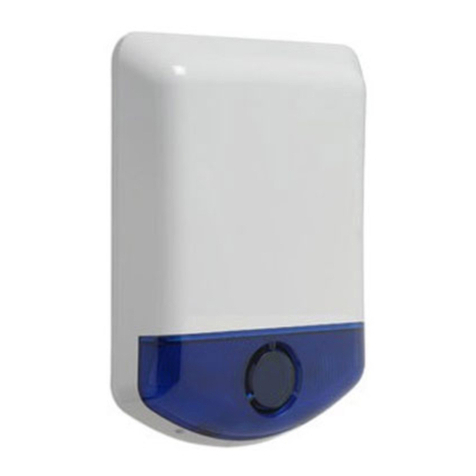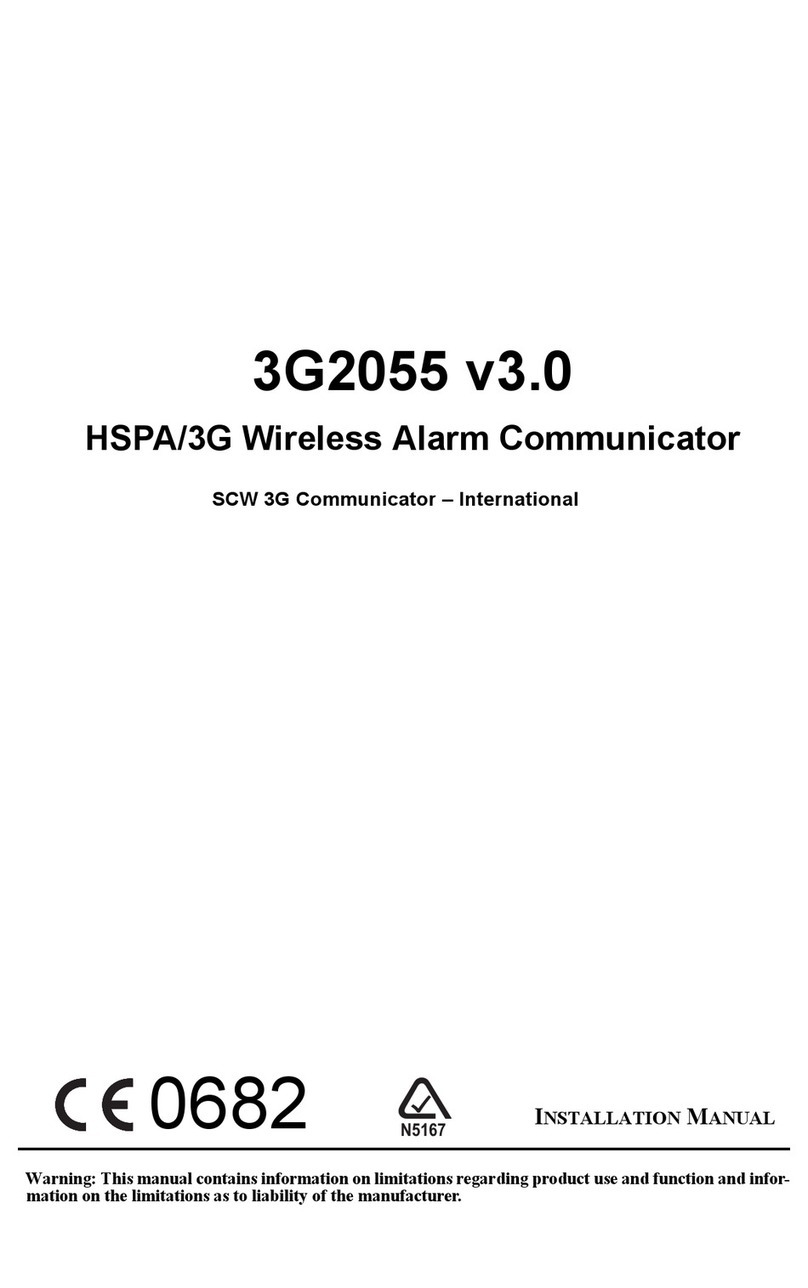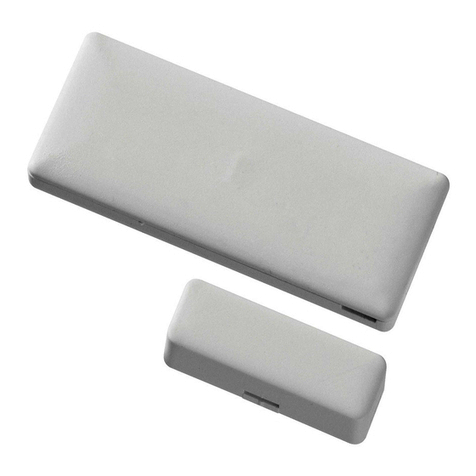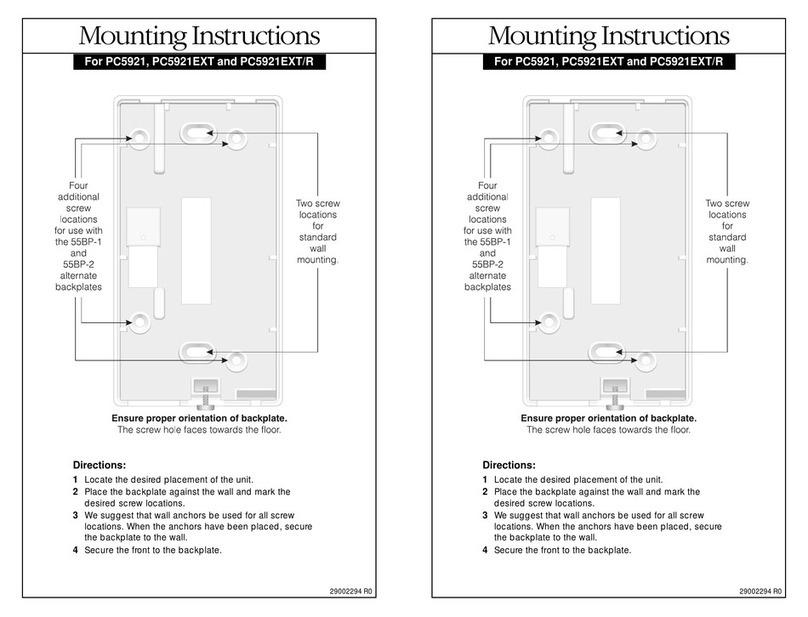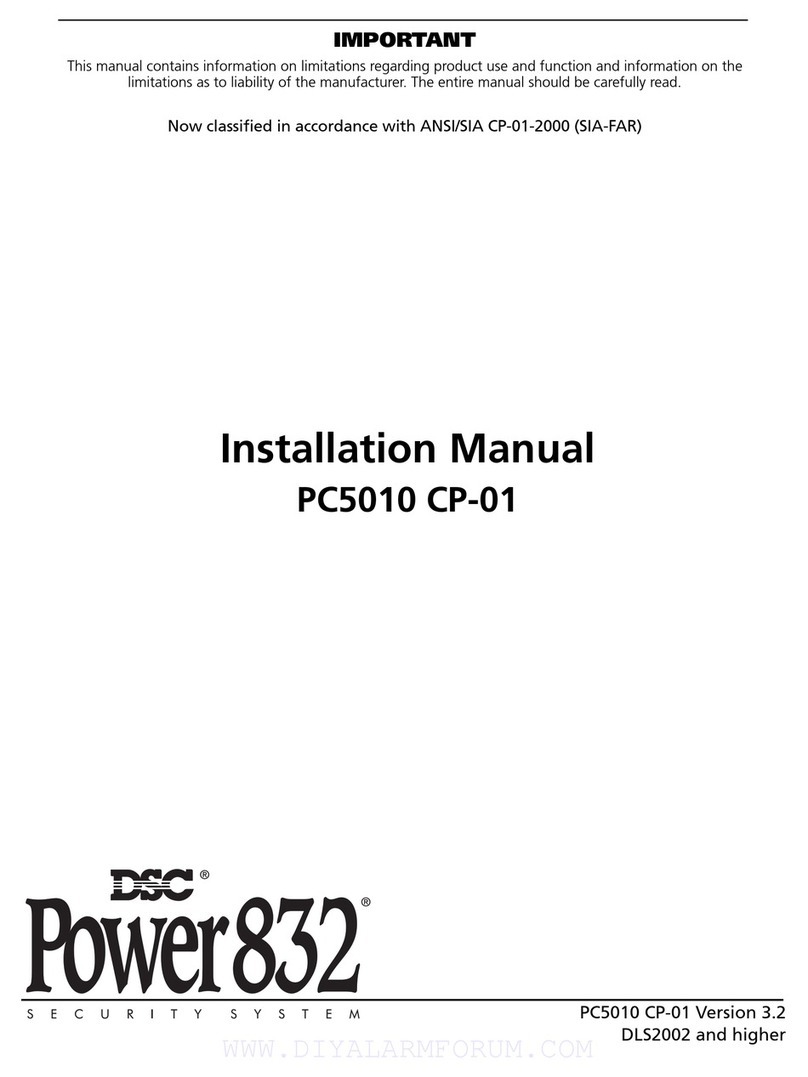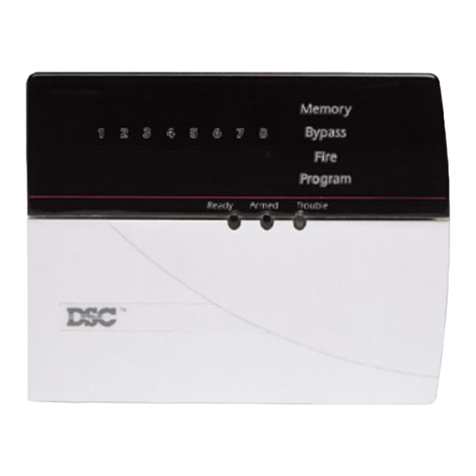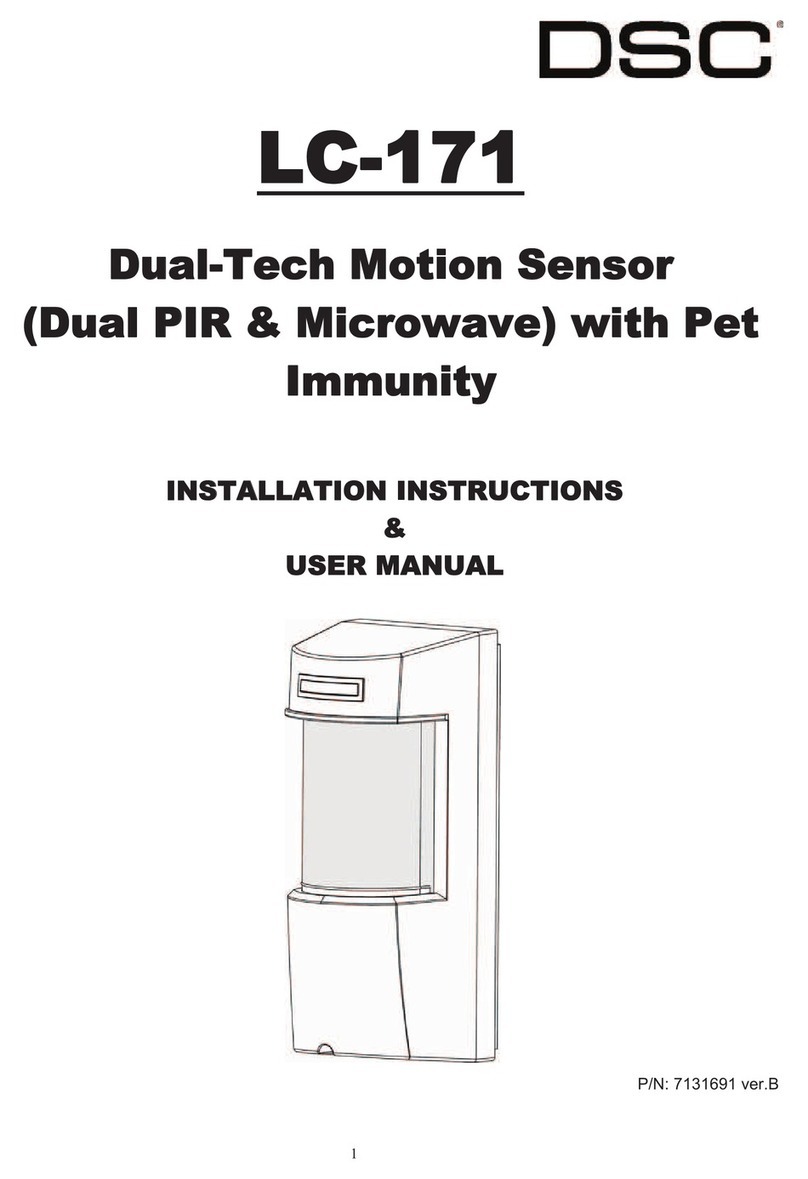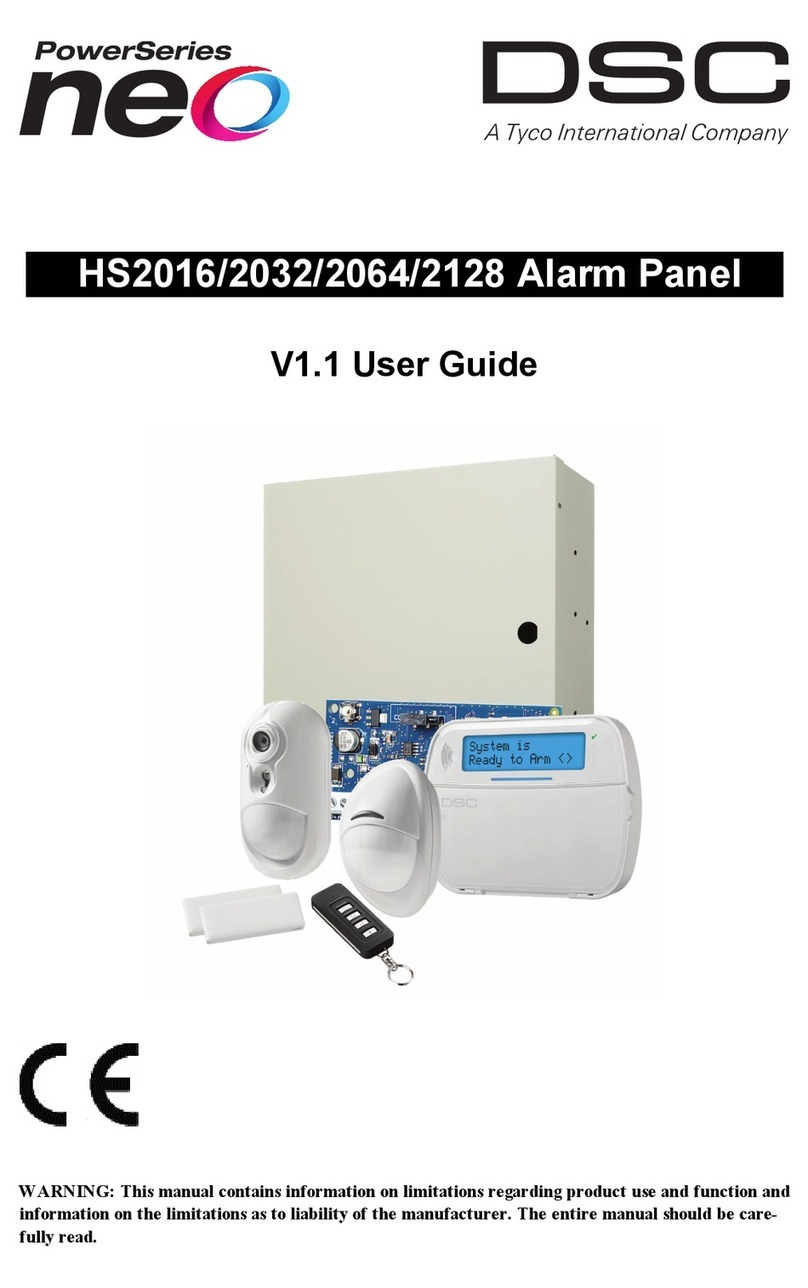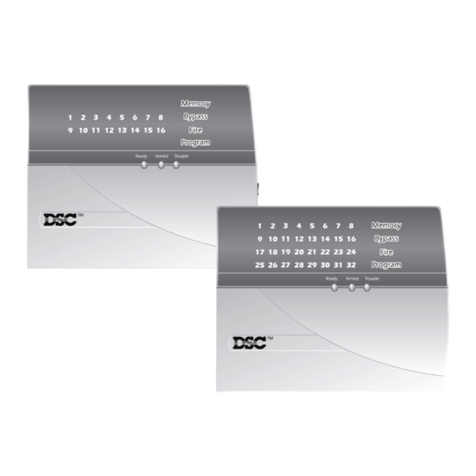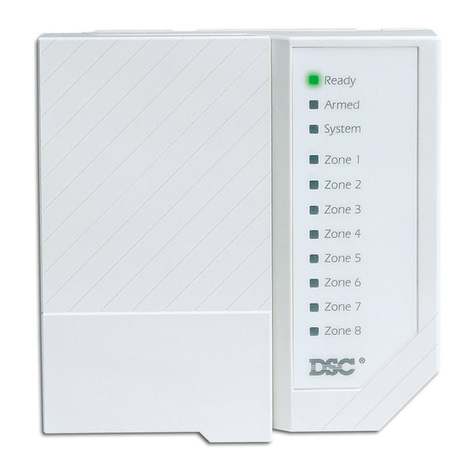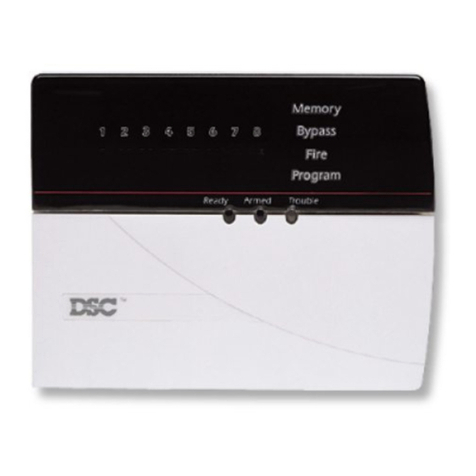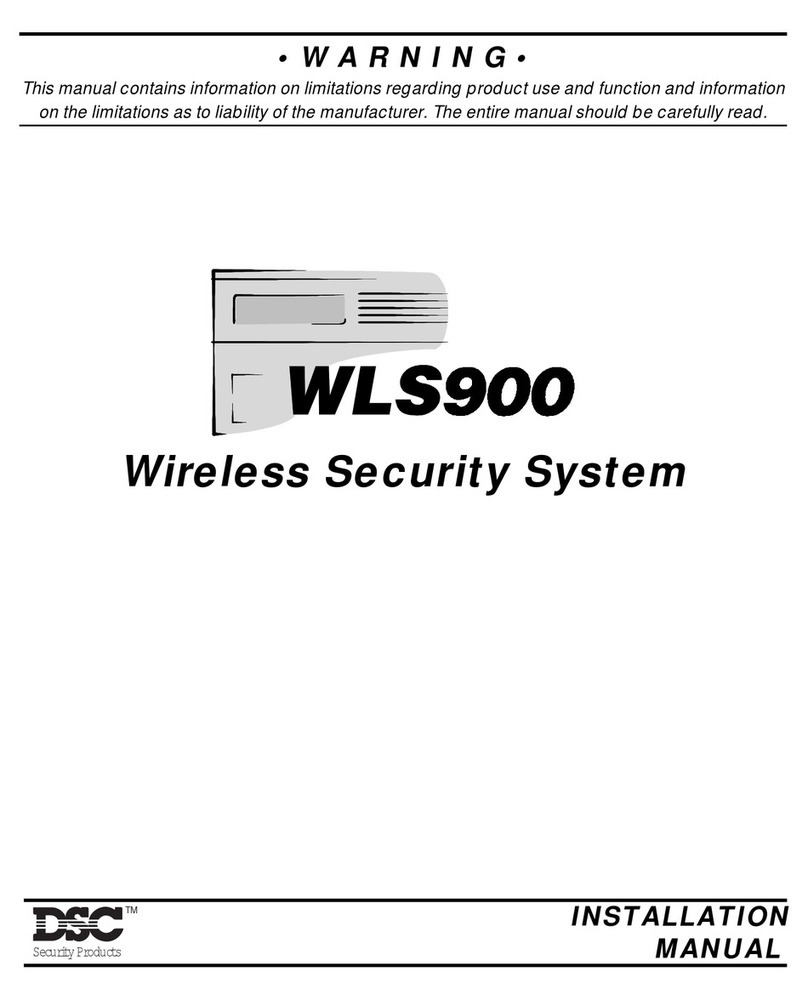
Introduction: 1.4 Additional Devices
3
WLS904 Wireless Motion Detector
The Wireless Motion Detector can be used in conjunction with
the PC5132 Wireless Receiver to include wireless space protec-
tion. The unit comes with four ‘AAA’ batteries.
WLS906 Wireless Smoke Detector
The Wireless Smoke Detector can be used in conjunction with
the PC5132 Wireless Receiver to include wireless smoke detec-
tion. The unit comes with six ‘AA’ batteries.
WLS907 Wireless Universal Transmitter
The Wireless Slimline Universal Transmitter can be used with the
PC5132 Wireless Receiver to add wireless door or window con-
tacts. The unit comes with three ‘AAA’ batteries and has built-in
contacts.
WLS908 Wireless Panic Pendant
The Wireless Panic Pendant can be used in conjunction with the
PC5132 Wireless Receiver to include personal wireless protec-
tion. The unit comes with 1 mini 12V battery (not user change-
able).
WLS909 Wireless Key
The Wireless Key can be used in conjunction with the PC5132
Wireless Receiver to include a simple and mobile method of arm-
ing and disarming the system. The unit comes with three Photo/
Electronic 1.5V batteries.
This system can have a maximum of 16 Wireless Keys.
WLS910 Wireless Handheld Keypad
The Wireless Handheld Keypad can be used in conjunction with
the PC5132 Wireless Receiver to include a simple and mobile
method of arming and disarming the system. The unit comes
with three ‘AAA’ batteries.
The system can have a maximum of four Wireless Handheld Key-
pads.
WLS912 Wireless Glassbreak Detector
The Wireless Glassbreak Detector can be used in conjunction
with the PC5132 Wireless Receiver to include wireless glassbreak
detection. The unit comes with three ‘AA’ batteries.
WLS914 Dual PIR Wireless Motion Detector
The Dual PIR Wireless Motion Detector can be used in conjunc-
tion with the PC5132 Wireless Receiver to include wireless space
protection. The unit comes with four ‘AAA’ batteries.
WLS915 Wireless Universal Transmitter
The WLS915 Wireless Universal Transmitter is a smaller transmit-
ter that can be used with the PC5132 Wireless Receiver. The unit
comes with three ‘AAA’ batteries and has built-in contacts.
PC5204 Power Supply Output Module
The PC5204 can provide up to 1 Amp of additional power for
modules or devices connected to the control panel. The module
requires a 16.5 volt AC 40 VA transformer and 4 AH battery. In
addition, the module provides 4 programmable high current volt-
age outputs. (See PC5204 Installation Instructions for details.)
PC5208 Eight Low Current Output Module
Adds eight programmable low current outputs (50 mA) to the
control. (See the PC5208 Installation Instructions for details.)
NOTE: If you use both the main panel and the PC5208 out-
puts, PGM3 will work the same as the first PC5208 output,
and PGM4 will work the same as the second PC5208 out-
put.
Escort5580 Module
This Escort5580 module will turn any touch-tone telephone into
a fully functional keypad. The module also includes a built-in
interface to control up to 32 line carrier type devices for lighting
and temperature control (See the Escort5580 Installation Manual
for details.)
NOTE: Users will not be able to access partitions 3 to 8, and
zones 33 to 64 through Escort5580 versions 2.x and lower.
Only partitions 1 and 2, and zones 1 to 32 are supported on
these versions.
PC5928 Audio Interface Module
The PC5928 Audio Interface module is a simple way to incorpo-
rate paging, intercom, baby listen-in and door answer to the
PC5020 control panel. The module also has built-in two-way
voice capability for central station (See the PC5928 Installation
Manual for details).
NOTE: The PC5928 version 1.x and lower will only support
partitions 1 and 2, and zones 1 to 32.
Three additional devices are available:
• PC5921 Intercom Audio Station can be used in conjunction
with the PC5928 Audio Interface Module.
• PC5921 EXT Door Box Audio Station can be used in conjunc-
tion with the PC5928 Audio Interface Module.
• PC5921 EXT/R Door Box Audio Station can be used in con-
junction with the PC5928 Audio Interface Module. The Door
Box contains a relay so the normal door bell can be used
instead of the internal one generated by the PC5928 module.
PC5400 Printer Module
This PC5400 Printer Module will allow the panel to print out all
events that occur on the system to any serial printer. All events
will be printed with the Partition, time, date and the event that
occurred. (See PC5400 Installation Manual for details.)
NOTE: The PC5400 v2.x and lower only supports events on
partitions 1 and 2, and zones 1-32.
LINKS1000/GSM1000 Cellular Communicator
The LINKS1000/GSM1000 Cellular Communicator provides an
efficient, cost-effective method for adding cellular back up. The
unit comes in its own cabinet with antenna and requires a sepa-
rate battery and transformer (see section 5.26 “LINKS1000/
GSM1000 Cellular Communicator” on page 33).
Downlook Support: PC5108L and DLM-4 v1.0L
The PC5108L will expand the control panel’s zone capability by
adding eight fully programmable zone inputs. The module will
also act as an interface between the DLM-4L v1.0 Video Trans-
mission module and the PC5020 control panel. The PC5108L is
also an 8-camera video switcher.
For more information on either module, see their respective
installation manuals.
NOTE: The PC5108L module can only be assigned zones
from 1 to 32. The PC5108L will not support zones 33 to 64.
Camera scripts can only be run for zones 1 to 32. The
PC5108L enrolls as two expander modules and use up two
supervisory slots.
NOTE: Do not mix PC5108L v1.x and lower modules with
PC5108 v2.0 and higher modules on the same system.
